
Rohm Claims ‘Smallest’ Terahertz Wave Oscillation and Detection Devices
Rohm Semiconductor has released new THz wave oscillation and detection devices, paving the way toward commonplace terahertz (THz)-enabled devices. The new devices, each offered as standalone parts, allow designers to integrate THz waves into their own sensor or communication devices.
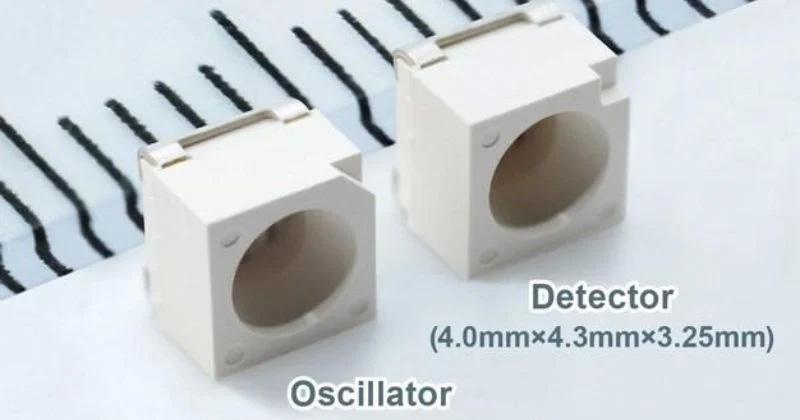
Operating at 320 GHz, Rohm's new THz devices provide new frequencies. Image (modified) used courtesy of Rohm Semiconductor
As researchers continue to blur the line between optical and radio frequency devices, electronics OEMs seek to bring these higher frequencies in small, low-cost, and commercially available components. Rohm designed its newest optoelectronic offerings to improve sensitivity and reliability in next-gen applications.
Making THz Practical
Rohm's THz oscillator comes in a 4 mm × 4.3 mm × 3.25 mm PLCC package with output power ranging from 10–20 µW at 320 GHz. Rohm's detector comes in the same package. With the oscillator and detector facing one another 10 mm apart, Rohm reports a dynamic range of 40 dB.
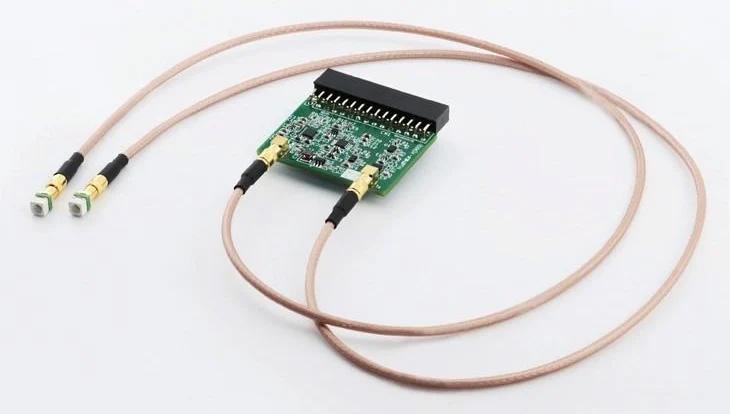
The Rohm THz evaluation kit allows designers to experiment with RTDs and THz devices and highlights the small size of the oscillator and detector. Image used courtesy of Rohm Semiconductor
The oscillators are not power hungry either, with a typical power consumption of only 10 mW each. This power consumption, combined with the ability to generate/detect THz waves at room temperature, ensures that the devices can be integrated into various applications.
Resonant Tunneling Diodes
At the heart of the Rohm THz devices are resonant tunneling diodes (RTD). These elements, named for the quantum tunneling effect, generate and detect THz radiation.
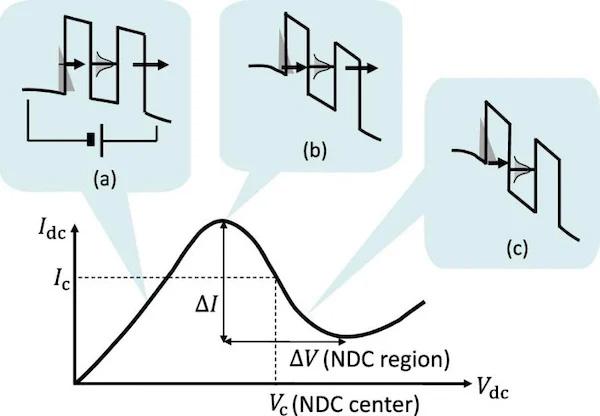
The band profile and I-V curve of an RTD highlight the negative resistance around VC, allowing high-speed oscillations for THz generation and detection. Image used courtesy of Applied Physics Express
While we won’t dig deep into the governing equations of the quantum well structure within an RTD, we can observe these elements from a system-level approach. The arrangement of ultra-thin layers creates a quantum well with a resonant energy level surrounded by two barriers. As voltage increases, electrons begin tunneling through these barriers, with the current reaching a maximum at a particular bias voltage. If the bias voltage is increased beyond this point, the resistance begins to decrease, creating a negative differential resistance (NDR) that can support oscillation at the THz level due to the high speed of the tunneling effects.
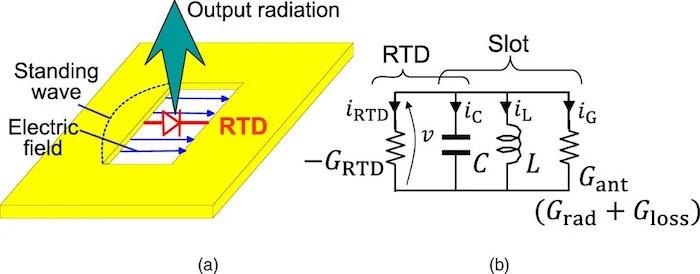
The resonator layout (a) and equivalent circuit (b) show the method of operation for an RTD oscillator by combining the RTD with an on-chip resonator. Image used courtesy of Applied Physics Express
Oscillations can be radiated into free space by connecting the RTD to a resonator tuned in the THz range. Conversely, if THz radiation hits a detector device with a very similar structure, it can be readily detected, allowing oscillator/detector pairs to send information to sense objects.
Expanding EM Horizons
Rohm believes its new THz devices will benefit a range of applications, including communications, non-destructive testing, THz imaging, and sensing.
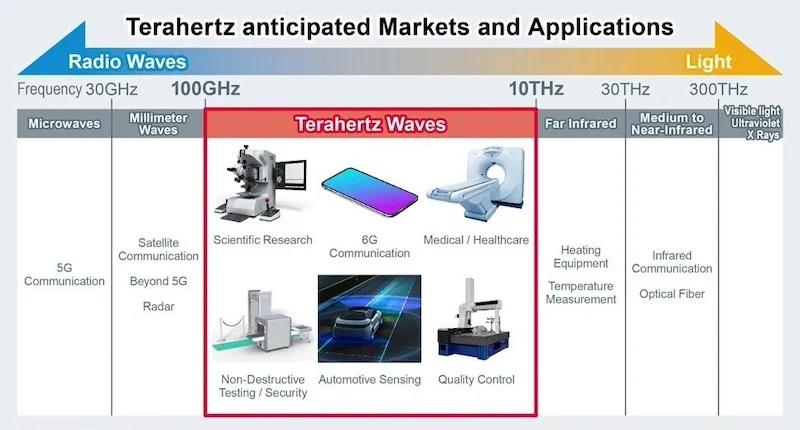
The terahertz region of the EM spectrum offers unique benefits that designers can now leverage. Image used courtesy of Rohm Semiconductor
Rohm is now sampling its THz devices and offers an evaluation kit with an oscillator, detector, and supporting electronics for designers to get up and running quickly




